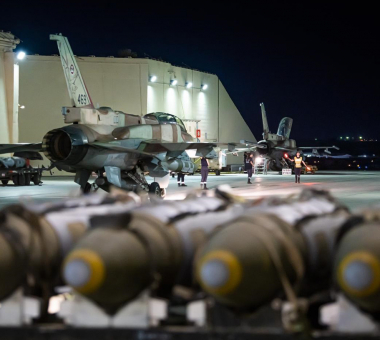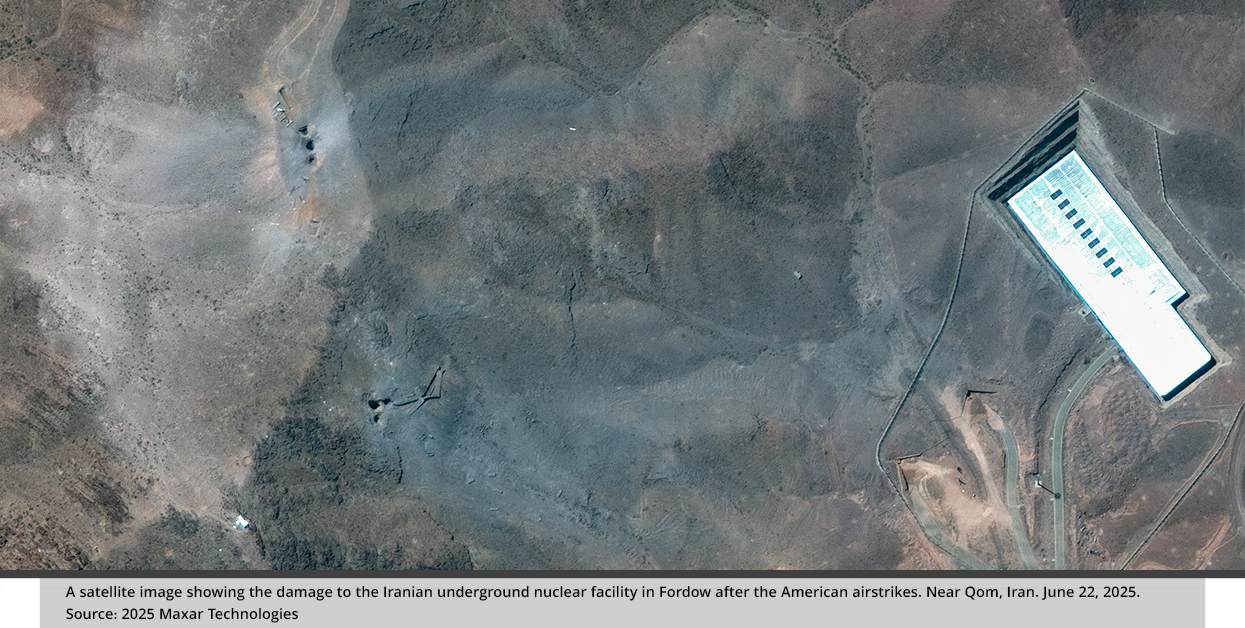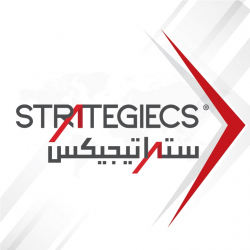Using the Heimlich Maneuver to Shift the Regional Security Landscape
The Middle East is undergoing a drastic transformation following Israel’s success in dismantling the Iranian encirclement through the "Heimlich maneuver"—an operation that shifted the confrontation from Israel’s borders deep into Iranian territory. This move has redrawn the balance of power and opened the door to a new regional reality built on effective deterrence and a range of choices between escalation and settlement.
by STRATEGIECS Team
- Release Date – Jul 10, 2025

The Middle East is witnessing a profound shift in the balance of power following the decline of Iranian influence, the erosion of its proxies’ capabilities, and the collapse of its well-known “Unification of the Arenas” strategy, which aimed to encircle Israel within a multifront strategic ring. This strategy relied on a complex network of hybrid forces and layered operations that posed a direct threat to the security of other states and their armies.
In contrast, Israel’s response was marked by a high degree of sophistication and innovation, establishing new military and operational doctrines that extend beyond the regional context into international frameworks.
This calls for a focused analysis of Israel’s strategic action that successfully dismantled the Iranian ring around its borders that acted as a noose around Israel’s neck. This is a necessary discussion that comes at a highly critical moment, especially as Israeli-related issues have long been surrounded by deep sensitivity in the Arab mindset and discourse.
How Did Israel View Iran’s Presence Around It for Years?
For years, Iran has created and solidified a noose around the state of Israel, encircling it with pro-Iranian militias along its borders in the north, south, and east while Iran itself—the initiator, funder, and director—remained distant and shielded from any direct or tangible threat of retaliation by Israel.
In practice, Iran effectively created a protective border with Israel, whereas Israel had no border with Iran. This allowed Iran to attack Israel without incurring the usual costs and consequences of direct confrontation.
While the activities of its proxies and allies—such as Hezbollah, Hamas, Islamic Jihad, and various militias in Iraq and Syria—served to promote its interests and solidify its influence, Iran itself managed to maintain a relatively moderate political image.
Many analogies and metaphors have tried to capture Israel’s predicament. Some likened Iran to an octopus that surreptitiously maneuvers its tentacles into Israeli territory, while others described Israel as being encircled by a pro-Iranian noose. In both metaphors, Israel was the target, constrained by the great distance and successive defensive layers standing between it and Iran.
It can be said, cautiously but confidently, that the Israeli operations that followed the October 7 attack—particularly “Operation Rising Lion” on June 13, a 12-day attack on Iran’s nuclear and military sites that opened a direct air corridor that gave Israel uncontested air superiority both enroute to Iran and deep within Iranian territory—have helped created a new reality: Israel now has a border with Iran, but Iran no longer has one with Israel.

Removing the Iranian Noose
For almost three years, Israel has carried out a regional Heimlich maneuver to remove the noose around it and open an air corridor that allows it (and other countries harmed by Iran) to breathe freely once again. (This military tactic is named after the emergency first-aid procedure to dislodge an object blocking a person’s airway.)
Israel’s strikes have dealt severe blows to Iran’s key proxies: Hezbollah has lost both its control infrastructure and its image; Palestinian factions in Gaza and the West Bank have been hit hard; Syria has become soft ground for targeted Israeli activity; and the Iraqi arena—once Iran’s strategic bridge—has been left disoriented and unable to focus. The axis we knew has been broken.
While Iran was tightening the noose around Israel, the latter was consolidating its effective intelligence presence deep inside Iran, penetrating the country’s top political and military infrastructure.
Notably, these Israeli moves are neither temporary nor momentary. Israel aims to maintain its air superiority over Syrian and Iraqi skies so that if and when Iran rebuilds its air defense systems within its own territory, then Israel’s response will be swift and direct—and it will heed no advice to the contrary.
Conceptual and Operational Employment in War
The developments that followed the war in Gaza—culminating in strikes on Iran’s military and nuclear capabilities—represent a revolution on both the conceptual and operational levels. Israel has shifted from being a target to becoming a regional actor by leveraging effective intelligence, both cumulative and real-time, alongside operational flexibility in executing objectives.
Through this approach, Israel, perhaps for the first time, succeeded in delivering a genuine defeat to irregular armed factions, penetrating their organizational structures, exposing their operational methods, eliminating their leaders (in Hezbollah, the Quds Force, and other factions), and damaging their military arsenals and uncovering their covert activities.
At the same time, Israel managed to avoid being drawn into a full-scale confrontation or entangled in guerrilla warfare—a qualitative shift in how nontraditional, hybrid, and asymmetric threats are addressed globally.
For Israel, what has been achieved is not merely a military and security accomplishment, but a pivotal moment that allows it to reshape and reengineer the entire regional landscape in line with its vision of the balance of power and post-war arrangements and consequences.
These outcomes have created a vast vacuum resulting from Iran's retreat from its spheres of influence, which were stretching across several Arab countries—from Lebanon and Syria to Iraq and Yemen—through proxies that had deeply infiltrated and asserted control over the political and security decision-making of those states.
This pro-Iranian expansion inflicted severe damage on the regional security system through a web of military and criminal activities, including arms and drug smuggling across borders and attempts to establish terrorist cells in targeted countries.
Today, Lebanon has regained its place within the national and Arab fold, while Syria is undergoing a transitional phase marked by a broad security vacuum and fluidity. In contrast, Iraq stands at the heart of the regional upheaval, opting to distance itself from the war as much as possible.
While “Operation Rising Lion” delivered a painful blow to the capabilities of the Islamic Revolutionary Guard Corps, both domestically and abroad, with a particular focus on its ballistic missile arsenal, the U.S. military operation struck a major blow to Iran’s nuclear ambitions, as B-2 stealth bombers targeted its three most prominent nuclear facilities: Natanz, Isfahan, and Fordow. This marked the end of a long era of strategic threat posed by those sites to regional and global security.

The Region at a Crossroads: War or Peace
Scenarios of confrontation remain on the table, and there are still actors working to move the pieces and ignite conflicts, seeking to keep the specter of war dominant over the Middle East. In Washington, a sharp divide has emerged regarding the assessment of the damage the United States inflicted on Iran’s nuclear facilities, a disagreement that goes beyond the immediate impact to the broader implications for the region’s future path.
The Middle East now stands at a decisive crossroads: either a renewed slide into an intense conflict over Iran’s nuclear program—one that would return the region to the cycle of traditional crises—or a shift toward a new trajectory grounded in eliminating threats, curbing the arms race, and prioritizing economic integration and sustainable development.
The sensitivity of this moment is further heightened by the Middle East’s role as a strategic arena deeply entangled with global flashpoints and conflicts. The likelihood of new players entering the field is growing, and the geopolitical reverberations of crises in Ukraine and Taiwan may well echo into Tehran, placing the region at risk of becoming a theater for settling major international disputes.
Yet amid this complexity, it can be argued that the time has come to quiet the drums of war that have echoed through the region over the past two years and to open the door to a phase of de-escalation and balance. Israel must recognize that while the instruments of hard power have compelled Iran and its proxies to retreat, they alone cannot define the region’s future. In fact, overreliance on these tools may lead to clashes with other regional powers and trigger a new wave of geopolitical competition, with early signs already emerging on the Syrian front.
Moreover, Israel’s current dominance is built on a unidimensional path of military and intelligence capabilities, as was clearly demonstrated during the war. But doubts remain about the ability of military power alone to shape and engineer the region’s future without the integration of more essential tools, such as political and economic instruments. Without such a comprehensive approach, the regional landscape is likely to remain fragile, complex, and unstable.
The Coming Landscape: Conflict or Cooperation
Prospects for expanding Arab-Israeli peace agreements have resurfaced, especially following the ceasefire between Israel and Iran—a conflict that, if it had continued, would have threatened to destabilize the entire region. Despite the scale of the war, the number of actors involved, and the diversity of their objectives, Arab states, by and large, remained shielded from its direct fallout and avoided any direct involvement, whether through political statements or military action. Jordan, Egypt, and the Gulf states also refrained from allowing their airspace to be used in U.S. or Israeli military operations. This position was understood by both Washington and Tel Aviv.
This stance comes despite the fact that the Iranian threat directly affects Arab national security and has had lasting repercussions for decades. Iran has consistently violated Arab airspace in its repeated attacks on Israel. And while it is true that Israel has primarily pursued its own interests from a strategic perspective, “Operation Rising Lion”—along with prior Israeli actions against the Iranian axis—has led to a shift in the balance of power that had tilted in Iran’s favor since 2011, thereby opening the door to the formation of a new regional order.
On the other hand, Iranian threats and the associated security risks have pushed regional states toward establishing joint defense arrangements in cooperation with the United States. This cooperation has played a key role in enabling Arab countries to protect their sovereignty and confront Iranian aggression, including the missiles and drones that have violated their airspace.
The impact of this regional coordination has been evident on multiple occasions, most notably in the interception of Iranian aerial weapons enroute to Israel through Arab airspace on April 14, 2024. Similar incidents occurred during the attacks in early October that same year, and again during the latest assaults following June 13, 2025.
In the end, Israel’s achievements were not the result of unilateral efforts alone, but stemmed from a shared threat assessment with the United States. They were also partly the outcome of a regional trajectory that has been gradually taking shape over the past several years. This trajectory was particularly reinforced during U.S. President Donald Trump’s first term, 2017–2021, which saw the United States establish itself as a central coordinating hub in regional defense affairs, thereby enhancing cooperation among regional countries in confronting common threats.
This means that the strategic outcomes of the war should be built on a participatory foundation, not imposed by a single state on the rest. History has proven the failure and futility of such unilateral approaches.
What is needed now is to seize this moment to establish a comprehensive regional security architecture that is inclusive of all parties, enhances economic prosperity, and fosters cooperation in political, security, technological, and commercial spheres. Such a framework would help attract major investment flows and enable comprehensive development based on the optimal utilization of the region’s energy resources.
The "Heimlich Maneuver": The maneuver is named after the American physician Henry Heimlich and is an emergency first aid procedure used to treat airway obstruction caused by a foreign object.

STRATEGIECS Team
Policy Analysis Team
 العربية
العربية